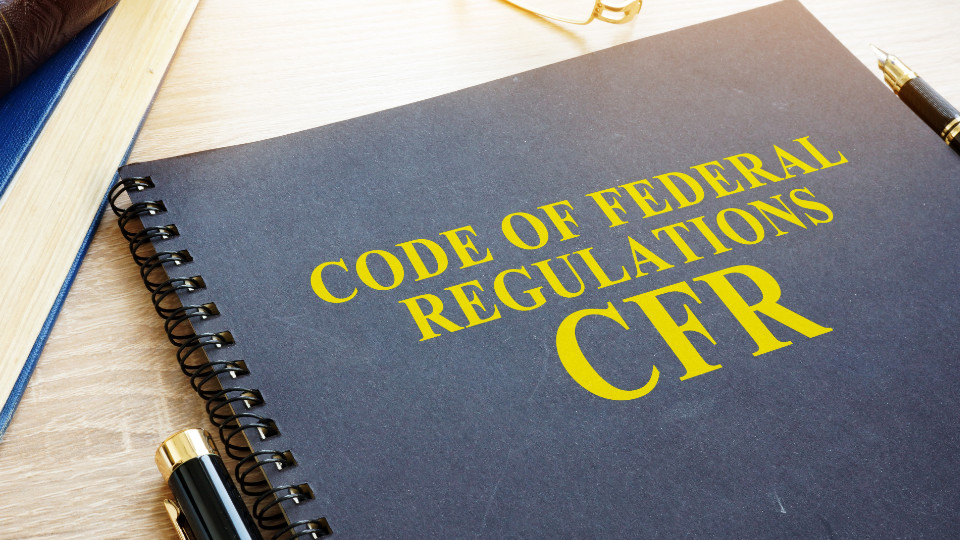It’s that time again: we’re rolling out our monthly expansion to the Title IX Lawsuits Database, this time focusing on judge records, school records, and interface simplifications.
To briefly recap, these expansions are different from the regular updates to individual cases we make all the time in that they are designed to expand the scope or features of the existing database in some meaningful way. Sitting at ~1200 records added or updated, this is easily our most data-intensive monthly expansion so far.
These changes are now live. If you aren’t signed up for our Title IX Lawsuits Database or would like a full guide to its features, we welcome you to view this link. The rest of this post will provide a quick summary of this month’s expansion and then a more thorough description.
Quick Summary of March 2018 Expansion / Upgrade
- 363 judge records have been created, with up to 8 data points filled and tracked for each judge.
- A spreadsheet of judges has been added to Courts page (which has been renamed Courts & Judges)
- ~400 lawsuits have been updated with judge info
- Judge Details pages have been created, listing all database info connected to each judge
- 203 school records – the judges’ alma maters – have been added to Schools Sued page (page renamed Schools)
- All 441 current school records have been updated with links to school websites
- “Quick toggle” buttons have been implemented in the Courts, Schools, and Changelog pages to increase data search efficiency
- Database search engines and filters now allow users to search and sort data by judges
- The database Guide has been updated to reflect these changes.
Complete Description of Changes
Judge Records
Previously, judges were only sporadically mentioned in other sections of lawsuit records. For example, the case outcome field might say “Outcome: on 3/21/2017, Judge Thomas P. Anderle granted the Writ of Mandate, allowing John Doe to return to school.” Most often, however, the judges remained nameless until today.
Each lawsuit record is now tagged with all the known judges in both state and federal courts, and at any level (trial, appellate, etc.), who have rendered a decision on that case. The list of judges totals 363 at this time. All lawsuit records can now be searched and filtered by any combination of judges via a few clicks.
When available and applicable, we’ve also added the following eight data points to each judge record (more will be added in the future):
- The judge’s most recent path to office (appointment, election, etc.)
- The name of the president who appointed the judge
- The party of the official who appointed the judge
- The total number of lawsuits the judge has heard
- The judge’s sex
- The judge’s race or ethnicity
- The year the judge was born
- Postsecondary institutions the judge graduated from
Each judge now has an assigned “Judge Details” page where users can view all their info, including a spreadsheet of lawsuit info for each lawsuit the judge has heard. Judge Details pages are accessible by clicking on a judge’s name wherever it is found in the database.
For those who like to view all the judge info in one big spreadsheet, we’ve added that at the bottom of the Courts page, which we’ve renamed Courts & Judges. With this spreadsheet, users can quickly search, sort, filter, and compare all judges by the eight data points listed above, as well as any new data we add regarding judges in the future.
School Records
Notably, ~40% of judges who hear Title IX-related lawsuits graduated from a small pool of 10 schools, while the other 90% graduated from 193 other schools. Since school records exist as a separate wing of the database, we’ve added these 203 school records to the Schools Sued page, which has been renamed to simply Schools.
The spreadsheet of school records also shows the total number of graduates who became judges hearing Title IX-related cases listed in the database, which also means the Schools spreadsheet can now be searched / filtered by this data.
Interface Simplifications
There’s a paradox in working with large or growing sets of data: the more data is available, the less accessible the data is if tools are not implemented to increase efficiency in finding the right data.
With this in mind, in areas where multiple spreadsheets of data exist for the same general data category, we have consolidated them into one and implemented “quick toggle” buttons that allow toggling between related datasets at a click.
Three sections now use these “quick toggle” buttons:
- The Schools page. The spreadsheet and interactive map of schools on this page now allow users to filter all school records by clicking on three buttons: “All Schools,” “Schools With Lawsuits,” and “Judges’ Alma Maters.”
- The Courts & Judges page. The spreadsheets of federal courts and state courts have been merged into one spreadsheet, with the option to quickly toggle between state and federal court datasets.
- The Changelog, which tracks all data added to the database. Data additions fall into eight main categories. Previously, separate spreadsheets existed for each category, making searching the Changelog ponderous. We’ve consolidated all eight spreadsheets into one, with quick toggle buttons allowing quick navigation between changelog record categories.
Lastly, below is a summary of all the database records that were updated since the 11/29/2019 relaunch. Note that each record may contain anywhere from five to twenty data points, depending on the record. The table below currently underestimates the total, because it does not include updates made to pre-existing school, law firm, or court records.
Have an Idea? Let Us Know.
We have a list of updates planned, and we’re already working on April’s expansion. That being said, we’re always open to hearing ideas. If there is anything you would like added to the database, let us know what it is and how it would be a meaningful addition by emailing us at info@titleixforall.com.
Thanks for reading. If you aren’t signed up for our Title IX Lawsuits Database, we welcome you to do so at this link.
Thank you,
The Title IX for All Team
Thank You for Reading
If you like what you have read, feel free to sign up for our newsletter here:
About the Author
Related Posts
It’s that time again: we’re rolling out our monthly expansion to the Title IX Lawsuits Database, this time focusing on judge records, school records, and interface simplifications.
To briefly recap, these expansions are different from the regular updates to individual cases we make all the time in that they are designed to expand the scope or features of the existing database in some meaningful way. Sitting at ~1200 records added or updated, this is easily our most data-intensive monthly expansion so far.
These changes are now live. If you aren’t signed up for our Title IX Lawsuits Database or would like a full guide to its features, we welcome you to view this link. The rest of this post will provide a quick summary of this month’s expansion and then a more thorough description.
Quick Summary of March 2018 Expansion / Upgrade
- 363 judge records have been created, with up to 8 data points filled and tracked for each judge.
- A spreadsheet of judges has been added to Courts page (which has been renamed Courts & Judges)
- ~400 lawsuits have been updated with judge info
- Judge Details pages have been created, listing all database info connected to each judge
- 203 school records – the judges’ alma maters – have been added to Schools Sued page (page renamed Schools)
- All 441 current school records have been updated with links to school websites
- “Quick toggle” buttons have been implemented in the Courts, Schools, and Changelog pages to increase data search efficiency
- Database search engines and filters now allow users to search and sort data by judges
- The database Guide has been updated to reflect these changes.
Complete Description of Changes
Judge Records
Previously, judges were only sporadically mentioned in other sections of lawsuit records. For example, the case outcome field might say “Outcome: on 3/21/2017, Judge Thomas P. Anderle granted the Writ of Mandate, allowing John Doe to return to school.” Most often, however, the judges remained nameless until today.
Each lawsuit record is now tagged with all the known judges in both state and federal courts, and at any level (trial, appellate, etc.), who have rendered a decision on that case. The list of judges totals 363 at this time. All lawsuit records can now be searched and filtered by any combination of judges via a few clicks.
When available and applicable, we’ve also added the following eight data points to each judge record (more will be added in the future):
- The judge’s most recent path to office (appointment, election, etc.)
- The name of the president who appointed the judge
- The party of the official who appointed the judge
- The total number of lawsuits the judge has heard
- The judge’s sex
- The judge’s race or ethnicity
- The year the judge was born
- Postsecondary institutions the judge graduated from
Each judge now has an assigned “Judge Details” page where users can view all their info, including a spreadsheet of lawsuit info for each lawsuit the judge has heard. Judge Details pages are accessible by clicking on a judge’s name wherever it is found in the database.
For those who like to view all the judge info in one big spreadsheet, we’ve added that at the bottom of the Courts page, which we’ve renamed Courts & Judges. With this spreadsheet, users can quickly search, sort, filter, and compare all judges by the eight data points listed above, as well as any new data we add regarding judges in the future.
School Records
Notably, ~40% of judges who hear Title IX-related lawsuits graduated from a small pool of 10 schools, while the other 90% graduated from 193 other schools. Since school records exist as a separate wing of the database, we’ve added these 203 school records to the Schools Sued page, which has been renamed to simply Schools.
The spreadsheet of school records also shows the total number of graduates who became judges hearing Title IX-related cases listed in the database, which also means the Schools spreadsheet can now be searched / filtered by this data.
Interface Simplifications
There’s a paradox in working with large or growing sets of data: the more data is available, the less accessible the data is if tools are not implemented to increase efficiency in finding the right data.
With this in mind, in areas where multiple spreadsheets of data exist for the same general data category, we have consolidated them into one and implemented “quick toggle” buttons that allow toggling between related datasets at a click.
Three sections now use these “quick toggle” buttons:
- The Schools page. The spreadsheet and interactive map of schools on this page now allow users to filter all school records by clicking on three buttons: “All Schools,” “Schools With Lawsuits,” and “Judges’ Alma Maters.”
- The Courts & Judges page. The spreadsheets of federal courts and state courts have been merged into one spreadsheet, with the option to quickly toggle between state and federal court datasets.
- The Changelog, which tracks all data added to the database. Data additions fall into eight main categories. Previously, separate spreadsheets existed for each category, making searching the Changelog ponderous. We’ve consolidated all eight spreadsheets into one, with quick toggle buttons allowing quick navigation between changelog record categories.
Lastly, below is a summary of all the database records that were updated since the 11/29/2019 relaunch. Note that each record may contain anywhere from five to twenty data points, depending on the record. The table below currently underestimates the total, because it does not include updates made to pre-existing school, law firm, or court records.
Have an Idea? Let Us Know.
We have a list of updates planned, and we’re already working on April’s expansion. That being said, we’re always open to hearing ideas. If there is anything you would like added to the database, let us know what it is and how it would be a meaningful addition by emailing us at info@titleixforall.com.
Thanks for reading. If you aren’t signed up for our Title IX Lawsuits Database, we welcome you to do so at this link.
Thank you,
The Title IX for All Team
Thank You for Reading
If you like what you have read, feel free to sign up for our newsletter here:
About the Author
Related Posts
More from Title IX for All
Accused Students Database
Research due process and similar lawsuits by students accused of Title IX violations (sexual assault, harassment, dating violence, stalking, etc.) in higher education.
OCR Resolutions Database
Research resolved Title IX investigations of K-12 and postsecondary institutions by the Department of Education’s Office for Civil Rights (OCR).
Attorneys Directory
A basic directory for looking up Title IX attorneys, most of whom have represented parties in litigation by accused students.






